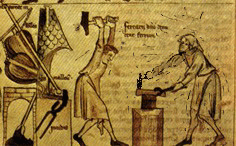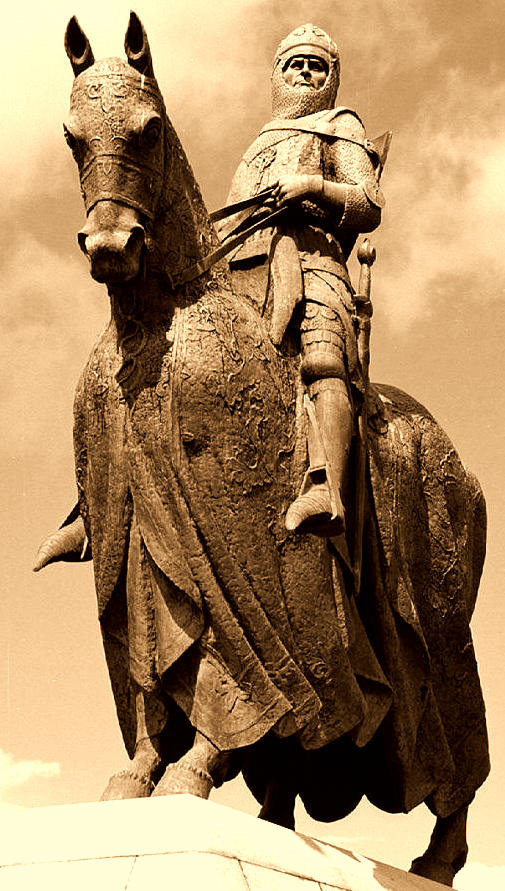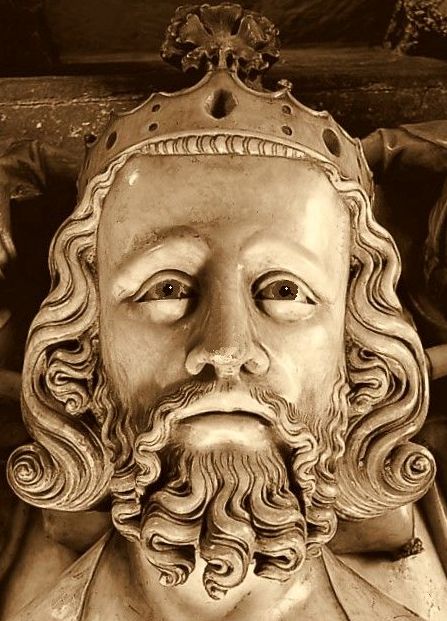
1301
LAY SUBSIDY.
A Parliament at Lincoln in this year authorised a “Lay Subsidy”.
This was a tax on the whole population and was based on a fifteenth part of each person’s movable possessions.
Among the taxpayers of Skelton were –
‘a merchant, a fuller, a weaver, a potter, a tanner, a baker, a smith, a butcher, 2 carpenters and 3 carriers [pannierman, wainman and a carter].’
There were 63 taxpayers in Skelton who paid a total of £5 13s .
Multiplying this by 15 gives the total value of these villagers possessions as £84 6s .
Total taxpayers in other places in the North Riding of Yorkshire were Guisborough 85, Whitby 96, Marske and Redcar 89, Yarm 72.
There were likely many poorer, labouring people who did not pay tax.
To see a full list of the Skelton taxpayers – Click here.
1304
WALTER DE FAUCONBERG DIED on the night of November 1st and was buried at Nunkeeling, Holderness, where there was a nunnery that had been founded by one of his ancestors.
His inquest was on the Feast of St Edmund the King and Martyr, November 20th [33 Edward I].
It is said the effigies of Walter and Agnes are on the North side of the altar of Nunkeeling Parish Church.
He was succeeded at Skelton Castle by his son, also called Walter, aged 40 at this time, who was married to Isabel, daughter of Robert, Lord Ros of Helmsley.
STANGHOW – There is a mention of 12 tenants in Stanghow, called ‘gresmen’ who held 10 ‘oxgangs’ of land.

1306
ROBERT DE BRUCE KING –
He murdered his rival John Comyn and was crowned king of Scotland.
Thus the descendent of the first Robert de Brus of Skelton started the Royal line of Scotland and [after the accession James I united the two kingdoms in 1603] of England.
In the words of J Walker Ord in his “History and Antiquities of Cleveland” –
“This small obscure and insignificant village will for ever stand renowned, not only in the history of Cleveland, but in that of the empire of the world, as the birthplace of a lofty and illustrious line of nobles, and the ancient cradle and nursery of warriors, princes, and kings.
From this little nook of Cleveland, sprang mighty monarchs, queens, high chancellors, archbishops, earls, barons, ambassadors, and knights; and, above all, one brilliant and immortal name, Robert Bruce, the great Scottish patriot, who, when liberty lay vanquished and prostrate in the dust, and the genius of national freedom had fled shivering from her native hills, bravely stood forth its latest and noblest champion, and, in defiance of England’s noblest chivalry, achieved for Scotland a glorious independence, and for himself imperishable fame.”
De Brus was fighting Edward I and into the following year was a fugitive in the West of Scotland.
1307
DEATH OF EDWARD I and accession of Edward II.
1314
BANNOCKBURN. Robert de Bruce defeated Edward II at Bannockburn.
Britain suffered severe famine during this period.
1318
DEATH OF WALTER DE FAUCONBERG II of Skelton Castle.
He was succeeded by his son John. John was married to Eva, daughter of William de Bulmer.
Perquisites from the Lord’s Court in Skelton amounted to 6 shillings and eightpence.
1319
SKELTON MARKET AND FAIR. John de Fauconberg had a grant of a weekly market on a Saturday and a fair on a Whit Monday and the following two days. Tolls from the fair in Skelton were 13 shillings and 4 pence.
1325
NEW SKELTON CHURCH
A new church was built on the site by the Castle where the Anglo Saxon one stood.
There was a ‘Chantry’ within the Church, called Skelton Chantry, founded according to Torr, in the year 1325, by Adam de Skelton, who, having obtained the licence of John Lord Fauconberge, Lord of Skelton and the King’s licence also, [i8. Edward I] “gave to the Prior and convent of Drax, one messuage and one carucate and a half of land in Hylton, in Cleveland, for which donation they granted to him for ever, that they would find one perpetual chaplain every day in the year to celebrate divine offices in the Church of Skelton in Cleveland, for the souls of him the said Adam and Margaret, his wife, of Peter, his father and Alicia, his mother and c.
And to allow the said chaplain and his successors five marks [1 mark = 3s 4d] per annum stipend; who within 2 months after every vacation, shall be presentable by him the said Adam during his life; and after his decease, by the Prior and Convent of Drax and their successors.”

1327
EDWARD II DEPOSED Civil war in England. Edward II was deposed and accession of Edward III.
SKELTON PRIESTS The priests at Skelton All Saints’ Church were John of Malton followed by John of Driffield.
1330
CASTLE REBUILT Much of the castle was rebuilt. It is likely that it had suffered from attacks of the Scots on this area.
1334
LAY SUBSIDY Skelton is assessed for the Subsidy at total £2, compared with Yarm £9, Guisborough £4 and Stokesley £1 : 4s.
1335
PRIORY GRANT. There is a record in this year of John de Fauconberg granting some land to Guisborough Priory, but retaining –
“the boon works and other customs owed by those who hold burgages and cottages in Skelton and Marske”
1342
CHURCH RATES START The Archbishop of Canterbury ruled that all having property in a Parish should pay towards the maintenance of the local church furnishings and its fabric, according to their possessions and revenues.
DROUGHT. A great drought occurred in this year.
Next Page – 1342 to 1400.
Previous Page – 1291 to 1301.
Contents Page.